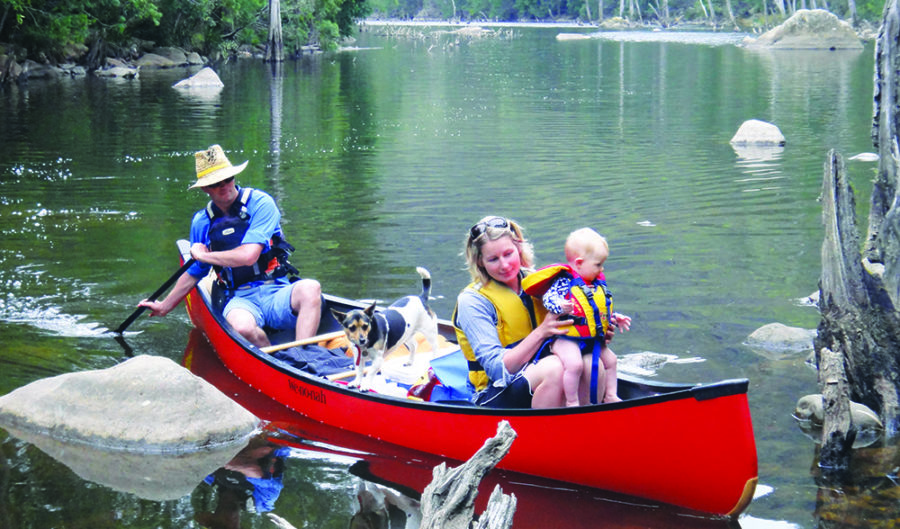Canoeing has been around for thousands of years and, other than the materials they’re made from, modern boats are not all that dissimilar in design to the vessels originally used by indigenous populations the world over for travel and adventures.
These days, a traditional canoe is called a C-boat, or a Canadian, and it has an open-top design, unlike a K-boat (a kayak) which has a covered top. Most canoes are around five metres (17 feet) in length and are paddled by one or two canoeists, each with a single-blade paddle.
There are various canoe designs and boats are made from a wide range of materials. The style (and size) of canoe you’ll want will depend on what it’s to be used for, where it will be paddled and how many occupants (and gear) it will carry.
Canoe length
The longer a canoe, for example, the faster it will travel; the more cargo it will carry and the straighter it will track… but it will be less manoeuvrable than a shorter canoe. Likewise, narrow canoes tend to be faster through the water than wide canoes, but less stable. And the more depth a canoe has, the better it will handle waves, although it will be more susceptible to crosswinds.
“In terms of size and capacity I’d say the minimum size for a tandem – for two people – would be around the 15-foot mark,” advises outdoor expert, canoe enthusiast and founder of Valley Outdoors and Paddle & Portage Canoes, Travis Frenay.
“One of the more popular tandem canoes that I offer is 18-and-a-half-feet long. In Australia we tend to consider a 16-foot canoe large, whereas in other parts of the world the 16-foot boat might almost be considered a cottage craft. In Canada, if you say you want to hire a tripper, they’re going to hand you a 17-foot boat, minimum.”
“Generally speaking, a longer waterline translates directly to speed, so the greater the length the more efficient the boat,” explains Travis, adding that, “efficiency is a term used to describe how well a boat glides through the water, or how much it will hold its speed after you finish paddling.”
As well as greater efficiency, longer boats have greater carrying capacity, so if you’re intention is to head off for a few days camping with the kids, then you’ll need a reasonably long canoe.
Different materials
“A plastic canoe is likely to feel more stable, while an Ultra-Lite (Kevlar) canoe can feel a little bit sporty, especially when it’s lightly loaded; as it doesn’t draft very much, it doesn’t sit very deep in the water,” explains Travis. “And because an Ultra-Lite has got such a smooth hull it tends to transition pretty quickly from edge to edge, which can be off-putting if you’re not used to it.”
There’s also a significant price difference depending on the material used in a boat’s construction, with plastic boats much more affordable than Kevlar ones – an important consideration when you’re just starting out.
“It’s always advisable to try an entry-level boat first, just to see if canoeing is actually something that you like doing,” says Travis. “There’s always the opportunity to move up later if it is something that you think you’re really going to enjoy.”
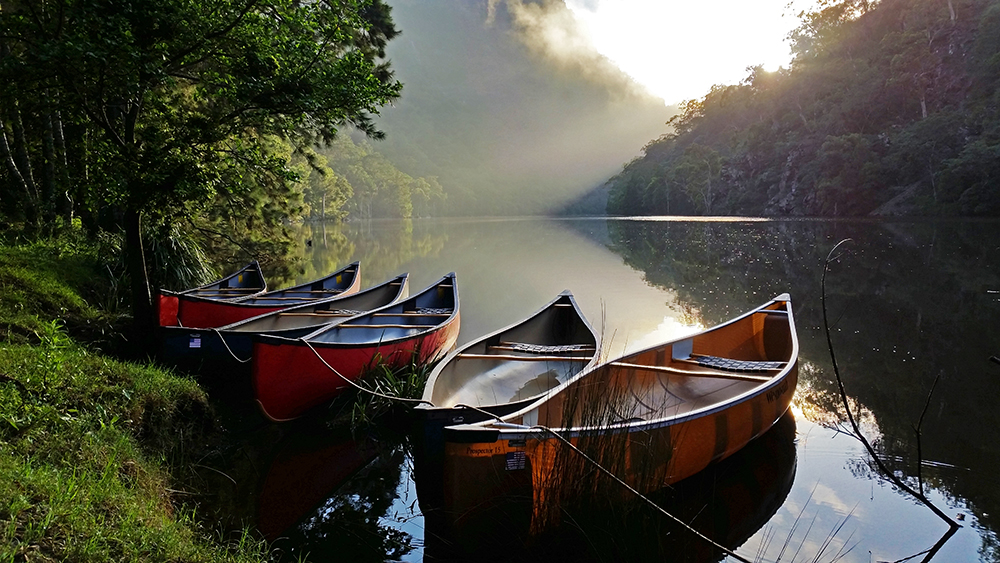
Life jackets
“When you have a comfortable life jacket it becomes a part of how you feel when you’re on the water; you don’t even really notice it’s there,” says Travis.
What makes for a comfortable life jacket? Well, you want one that won’t restrict your arm movement, and one that won’t chafe, so you can put your arm across your chest to paddle outside the craft without pinching your bicep against the chest material of the life jacket.
As well as keeping you afloat if you fall into the water, Travis says a life jacket can be a vital tool if you need to self-rescue if your canoe capsizes. “Trying to self-rescue a canoe from the water is nearly impossible without added buoyancy on your body,” he says. “For me, not wearing a life jacket; I wouldn’t even think of it.”
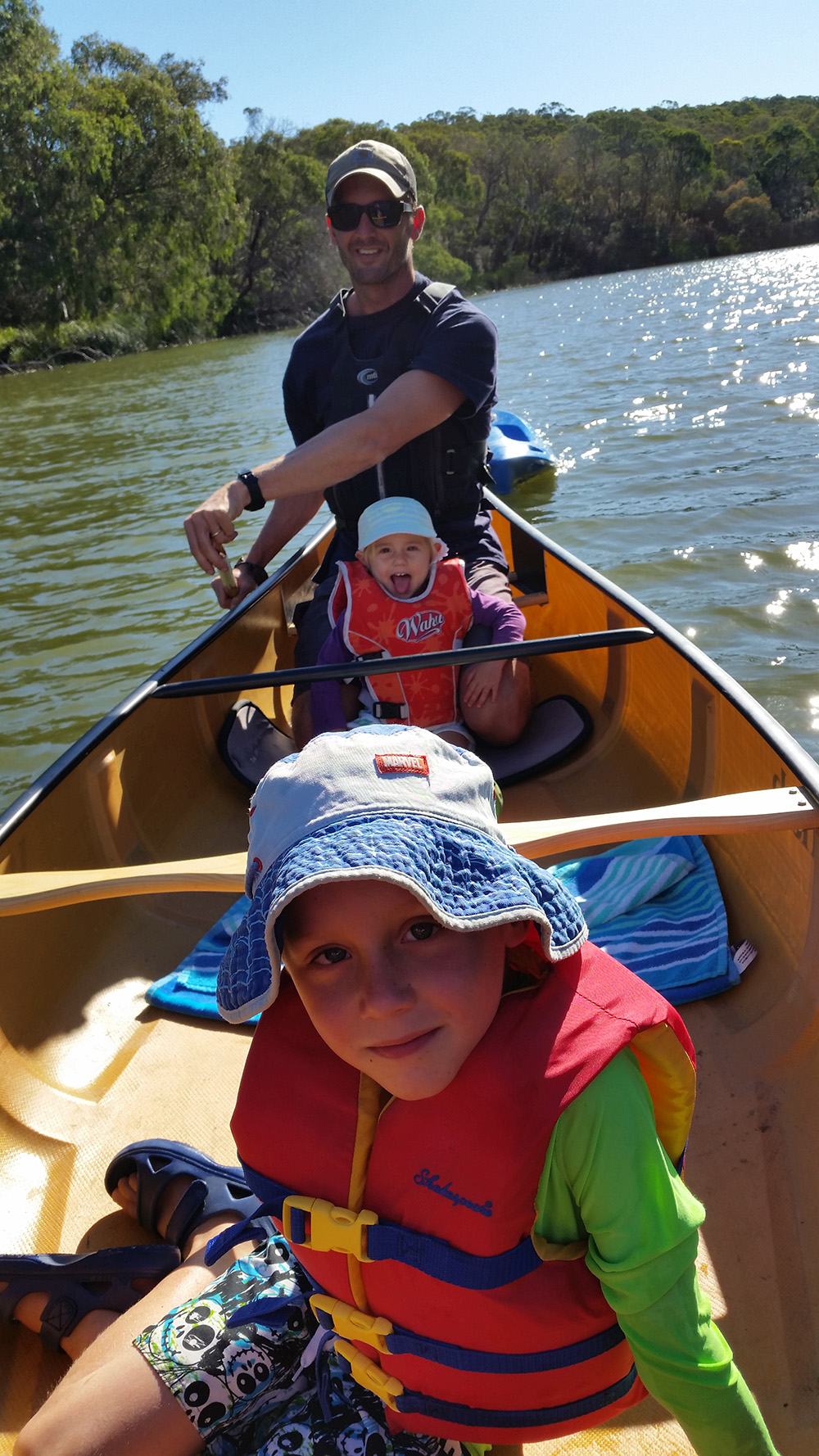
Canoeing clothing
“There’s a Canadian co-instructor I work with who’s from Nova Scotia, and he religiously preaches to people about dressing for the water temperature and not the air temperature,” says Travis.
Why? Well, it might be a balmy 20 degrees Celsius when you’re sitting in the boat, but if you fall into the drink the temperature can be in the single digits, particularly in inland rivers and lakes.
“If you were to fall in, the question is: how long will you last in the water before you become incapacitated, and so the general rule of thumb is dress to the water temperature, not the air temperature,” reiterates Travis.
If the air temperature is warm and the water temperature is cold, you should wear synthetic or wool layers (not cotton), and if the risk of capsize is high, wear dry pants, a dry jacket, and potentially even a dry suit, and, says Travis, “at least a paddling cag [jacket] with multiple layers underneath to keep your core warm and dry.”
First Aid kit
“Depending on how remote you’re going, it might be worth having some items in your kit that can be used for field repair of your equipment should you need it,” he advises. “This could be a small fibreglass resin repair kit, and certainly duct tape is advisable, and there’s a new wonder material called G/Flex epoxy, which is quite usable. If you have a plastic polyethylene canoe you might want to have a piece of plastic strip for a welding piece if you have a split or a crack, and you can use your camp stove to perform an in-field repair that way… those items would probably get you out of most situations.”
Canoeing communications
“If mobile reception is going to be limited, or even intermittent, then it’s certainly advisable to have something like a PLB [Personal Locator Beacon] or a Garmin InReach or a Spot [satellite messengers], and a reliable contact at the other end to receive those messages,” says Travis.
Of course, you’re going to need to make sure that any electronic equipment like this is safely stowed and kept dry, so thoughtful packing is of paramount importance.
Packing the canoe
Another affordable option is to line a hiking backpack with two heavy duty, durable plastic bags, twist-shut the tops and tuck them away. This means the whole pack can fall in the water, yet it will still float and it will keep everything dry.
And making sure that everything floats is vitally important.
“The rule we always say is “everything needs to be packed so it will float and if it doesn’t float – like a toilet shovel – then strap it to something that does,” says Travis. “So you can take a cast-iron camp oven on a canoe trip, but it’s got to be strapped to a backpack that will float. And often that floating gear, like a buoyant backpack, can become a rescue implement in the event of a capsize and a self-rescue.”
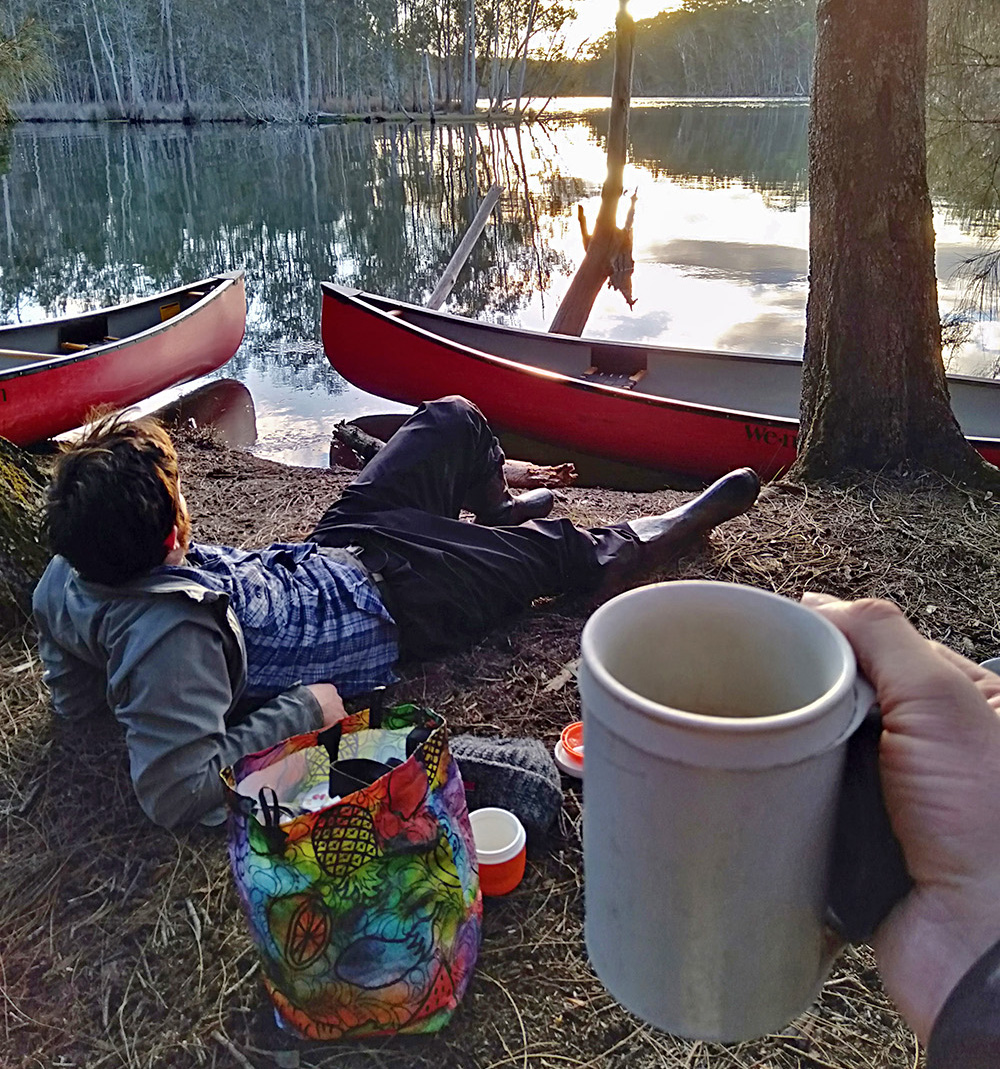
Self-rescue
If you’re going to paddle solo, or even in a group, it’s important that you learn how to self-rescue in the event of a capsize.
“With a kayak you can do a wet re-entry and bilge pump out the cockpit, which is a pretty small volume area, but with a canoe, you can be there in the water for half an hour trying to bucket-bail it yourself,” warns Travis.
“There are some techniques where, from the water, you can actually lift the canoe most of the way out and, in a quick motion, sort of throw it. And there are times when I have done this where the boat ends up 100 per cent empty, and there’s not another canoe in sight. It’s a pretty comforting feeling to know that you can do that, because if you know you can do it, then you don’t worry about paddling in the middle of a lake in questionable conditions with no one else around.”
Learning to paddle
“If you’re open to the idea, and you have the funds to do it, going on a guided trip is definitely worthwhile,” says Travis, adding that on one guided trip you can learn as much about canoeing in a day as you would out by yourself on 10 trips. (See Travis’s expert advice on canoeing essentials here.)
“Content-wise, on a guided trip, you’ll learn everything from campsite selection and setting it up appropriately, how to cook in the outdoors, how to clean things properly, how to handle packing your boat for a successful journey, how to steer… all those things are covered on a guided trip.”
Travis says there are also several companies that offer paddling tuition where you can learn about paddling techniques and dealing with different conditions such as crosswinds, waves and rapids. “There are a lot of product companies that offer tuition,” he says. “I offer tuition through our business [Paddle & Portage Canoes]… and while canoe tuition doesn’t seem to be as popular as kayaking tuition, you can still find it if you look around.”
What exactly will you learn on a canoeing course? Travis says the tuition he provides is based on a tried and true formula. “Essentially, it’s modelled on what we do when I’m training for Paddle Australia (formerly Australian Canoeing), or when I’m teaching for TAFE,” he says. “The way in which we teach and the progression of skills that we follow is fairly standard, and it’s basically learning how to start, how to get dressed, how to fit the equipment, how to choose it and then how to get in the boat and how to make it go and how to be effective.”
Canoeing community
“It’s very helpful to join clubs, or networks of other knowledgeable paddlers, and just pick their brains,” he says. “There’s no pride in pretending you know everything and not seeking information… and while paddling clubs often have a membership fee, with that comes organised trips and insurance and things like that, and access to equipment.”
Of course, social media has brought canoeists closer together. “I started a page on Facebook called Canoeing Australia, which is just basically for anyone who wants to paddle a canoe, and they can just share pictures, ask questions, hire equipment, buy equipment, whatever… it’s been used well lately with people saying, “Hey, I’m going to southeast Queensland. Where’s good to paddle? Does anyone want to paddle with me?” and it is working.”
Canoeing equals family fun
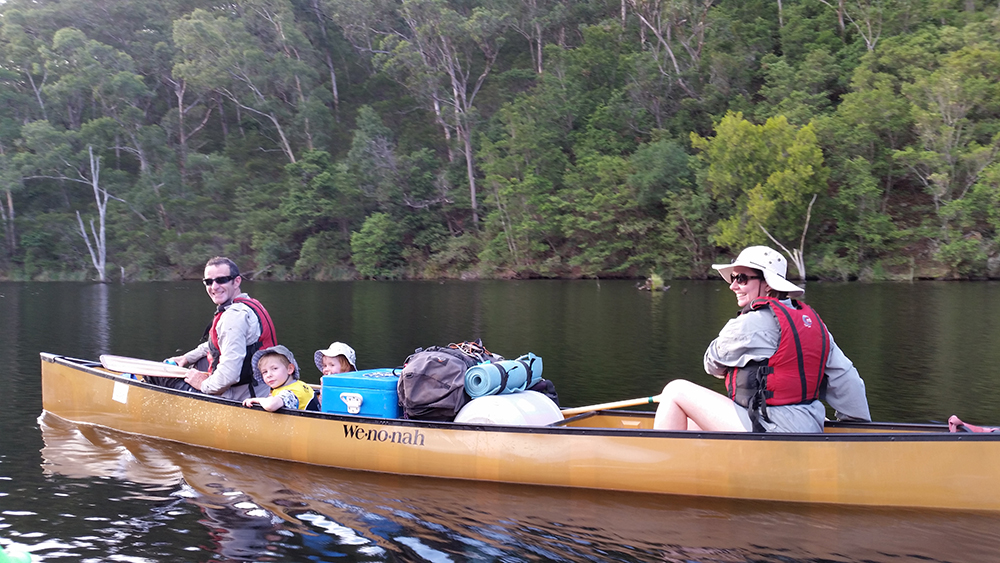
One of the great things about canoeing, compared to kayaking, is that it’s more suitable for young families who like to experience the wonders of the outdoors together.
“My family canoe takes the four of us plus my dog, and we can load it and paddle for six days unsupported, without any help from anybody,” says Travis. “Or I could dump the whole family on the bank and take the boat paddling myself and that would be just as enjoyable, with the same craft. I don’t know any kayak that I can do that with… not even close.”
“So many people look at canoeing and they scratch their head and ask “Why? Why would you do that?” but it’s one of those things that you have to try out to understand. There’s a reason that canoes have stood the test of time, and that so many people are so rabidly obsessed with them. I’ve spent my whole life trying to articulate why I love canoes so much, and even now I still can’t. All I can do is just say, “try it yourself” and hopefully you’ll understand.”

